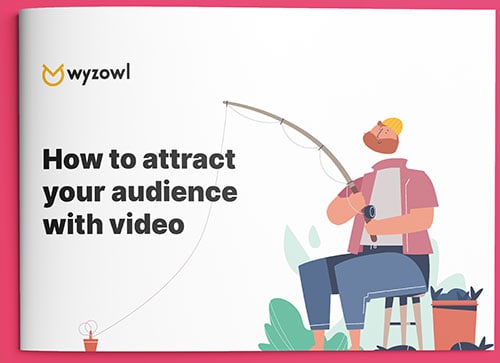This post was written by Taylor Barbieri – a content marketer for Podia, an all-in-one platform where online courses, digital downloads, and membership websites — alongside their creators — thrive. Check out their free 12,000+ word guide to creating profitable online courses, even if you’ve never done it before.
So you’ve read the State of Video Marketing 2020 survey results, and you’re convinced: This is the year your team is going to get serious about video.
But you feel a little unsure about producing more video content.
For one, you have so much great written content already. You’re worried about “abandoning” your fabulous written content if you focus more on video.
You’re also worried about coming up with totally new topics for your videos. Your written content has covered every topic imaginable six ways from Sunday, and you’re concerned your video content may be less informative or interesting.
It sounds like your team should consider content repurposing.
Repurposing content is a great way to educate existing customers and win new ones without overburdening your marketing team.
In this article, we’ll take a look at seven ways brands can repurpose their written content into a variety of video formats, from Instagram Stories to YouTube ads and customer service videos.
But first, let’s clarify what content repurposing is and why savvy brands should do it.
What is content repurposing? Why should you repurpose content?
Content repurposing involves taking the main points from one piece of content and presenting them in another content format.
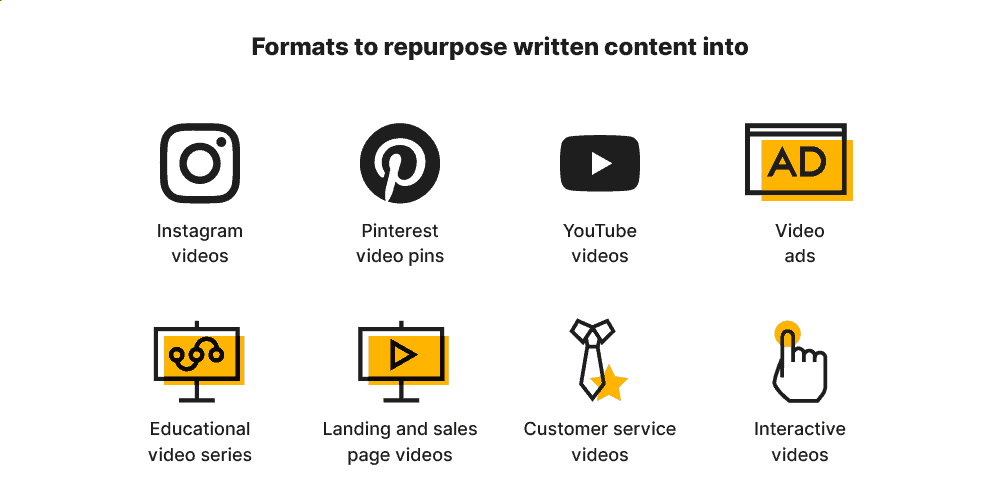
Repurposing content can save your team huge amounts of time on content creation.
Regardless of your industry, chances are your marketing team spends more time than is necessary coming up with content ideas.
With content repurposing, marketers can release exponentially more content than if they came up with distinct topics for each content format and channel. Even better, this usually doesn’t require more time or resources.
Distributing the same messages in multiple formats also helps remind those who’ve already seen the content of its key points.
More content formats can help businesses to reach more people, too, than by relying on one format or channel alone.
Basically, the possibilities are endless when it comes to formats that you can repurpose your written content into.
However, repurposing written content into video content is often one of the best places to start.
86% of consumers want to see more videos from businesses in 2020.
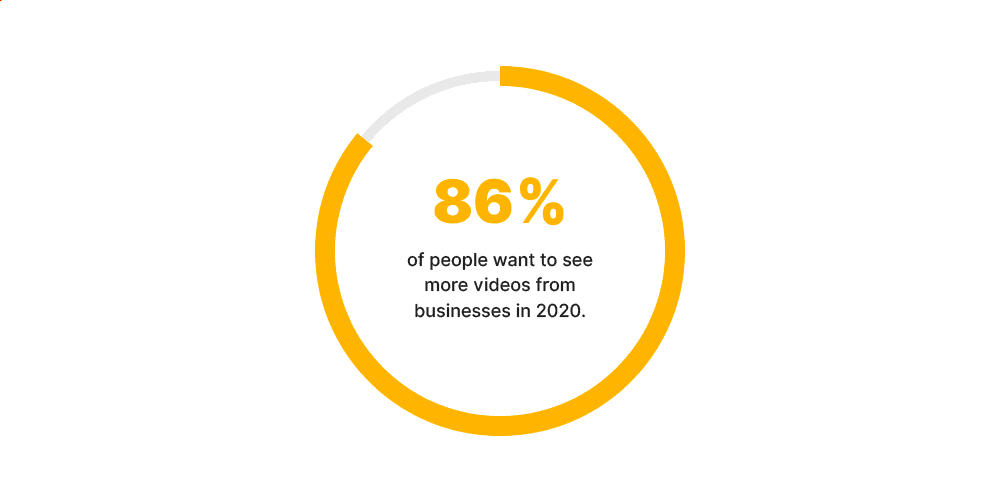
Releasing more video content could help you to both scratch consumers’ itch for more video content and gives you another medium for connecting with customers.
Written content is great for organic discoverability through search engines. But – as we’ll go on to explore in more detail throughout this article – many people actively seek out video content to discover brands, products, services and pick up new skills and knowledge.
And, given that you’ve already invested heavily into creating your written content, taking the comparatively minimal time and effort to repurpose it into other formats is the proverbial no-brainer!
Now that we’ve covered the basics of content repurposing, let’s look at seven ways brands can recycle their written content into video formats.
Format #1: Instagram video
Instagram is one of the best social media platforms from exposure and potential ROI perspectives.
For one, 200 million people visit at least one business profile per day.
83% of consumers have also said that Instagram helps them discover new products and services.
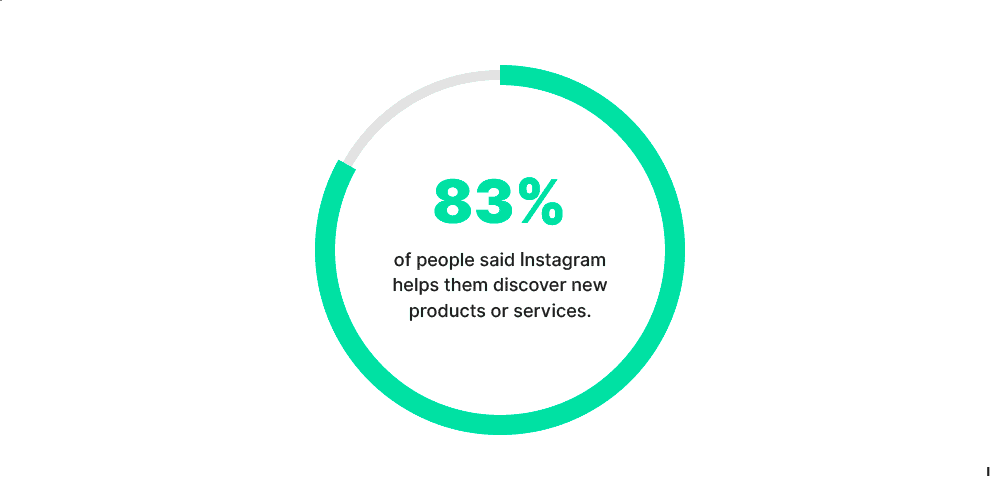
65% of people have visited a brand’s website or app after seeing their product or service on Instagram, as well.
Instagram allows brands to use more than just image posts to make their audiences swoon — they also support video content.
There are four video formats on Instagram: video posts, Stories, Instagram TV (IGTV), and Instagram Live.
Instagram video posts are a maximum of 60 seconds. Businesses could repurpose content into video posts by using each post to address one main point from their original content.
Let’s say we were to turn this article into a series of Instagram video posts. We could discuss each of the content formats in one post.
Video posts can also be used as a teaser to send more traffic to the original content.
We created this Instagram post to share a snippet from a longer video, in addition to promoting the original content:
Besides articles, brands could easily create a video post as a teaser for a blog post, white paper, or other written content.
The second Instagram video format is Stories, which are used daily by over 500 million people. Instagram Stories can be a maximum of 15 seconds and disappear after 24 hours.
Don’t look at Stories’ short length as a challenge, but rather an opportunity.
Stories can help you trim your content so you deliver only the most essential and compelling information to your followers.
Brands can also use Stories to share customer testimonials or a behind-the-scenes look at their business (such as information from your company’s “about” page).
Consider Mailchimp as an example. Mailchimp used Stories as part of their “A Day in the Life” series, where followers could meet Mailchimp employees.
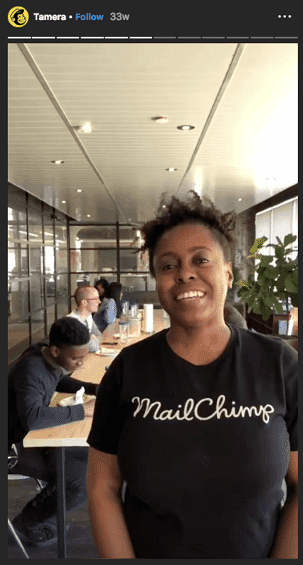
If you don’t want to portion your content into short video posts or Stories, you could create longer IGTV videos instead.
IGTV videos must be at least one minute long. They can be a maximum of 15 to 60 minutes, depending on how they’re uploaded.
Because of their length, IGTV videos would be better for repurposing longer content — think pillar posts, original research reports, interviews, product demos, and the like — or even several pieces of content.
IGTV videos are stored under the IGTV tab, separate from other Instagram content. Because of this, businesses can turn their IGTV videos into a visual content library for Instagram users.
Le Creuset, as an example, has created a collection of recipes and cooking tip videos with IGTV.
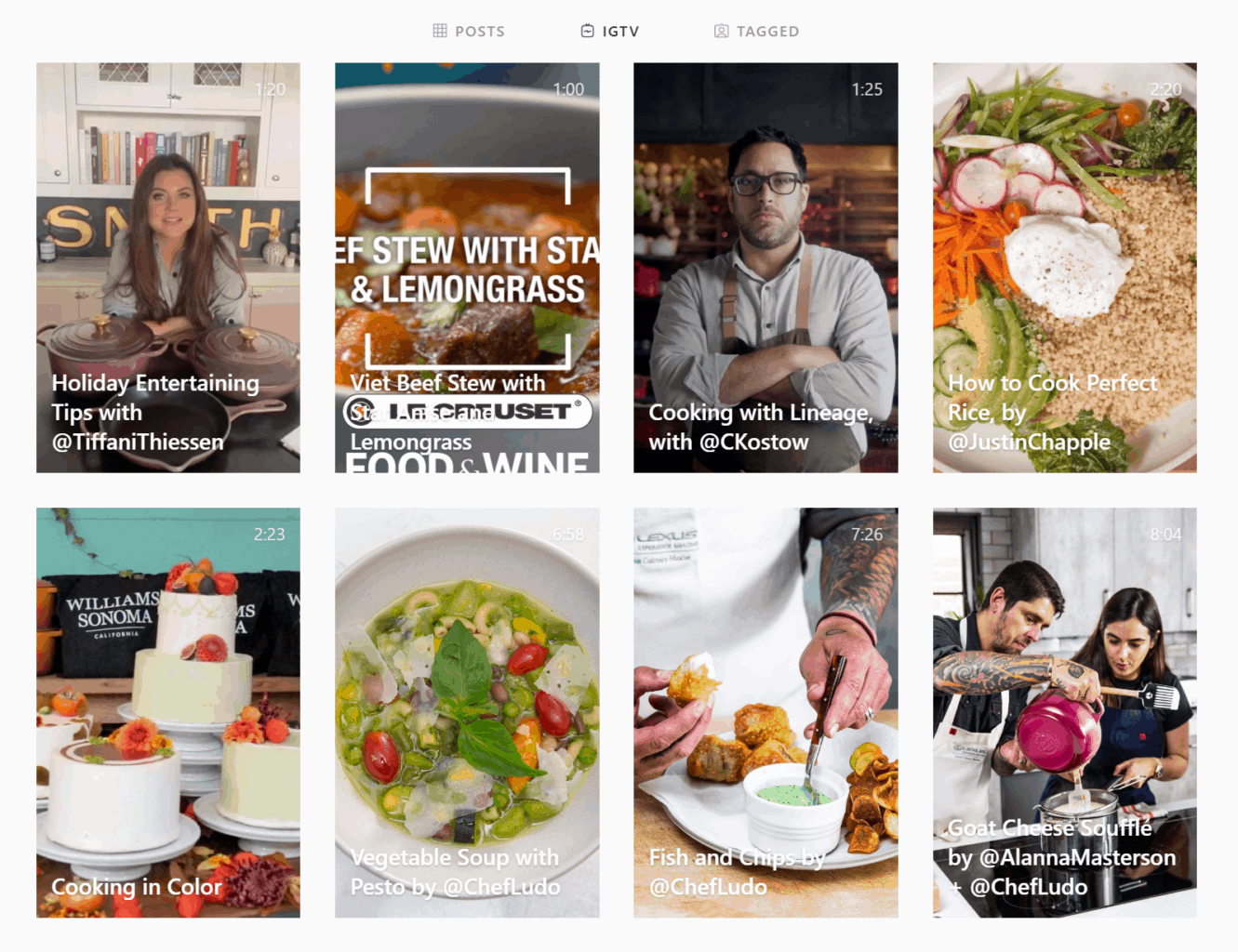
Instagram’s fourth and final video format is Instagram Live, which is live streaming.
Like IGTV, Instagram Live is great for longer-form content.
However, it’s especially useful for product demos, commonly asked questions, and any other content that you want to update regularly or frequently field questions about.
The musician John Mayer, as an example, used this Instagram Live video to give viewers a guitar lesson:
Basically:
Each Instagram video format provides ample opportunity for brands to experiment and excel with content repurposing.
For ideas about how to make the most of your Instagram efforts, check out these 10 brands who are rocking Instagram video.
Our second platform comes with fewer video options but does have a highly engaged audience you won’t want to ignore.
Format #2: Pinterest video pins and video ads
Like Instagram, Pinterest built its reputation on its image-heavy content.
However, Pinterest also supports video content in the form of video pins. Video pins are videos between four seconds to 15 minutes in length that users can search for on Pinterest and “pin” to their boards.
Despite Pinterest’s popularity and profit-making potential, only 28% of marketers said they use Pinterest.
Brands should capitalise on this low adoption rate so they can reach more potential customers and reap more ROI before the platform becomes more saturated with advertisers.
One report found that Pinterest yields $2 for every $1 advertisers spent. Pinterest also yielded an additional $60 more in profit for every $100 compared to other platforms that were measured.
Sounds like Pinterest is worth investing in, no?
Well, it gets even better.
78% of Pinterest users said content from brands was helpful.
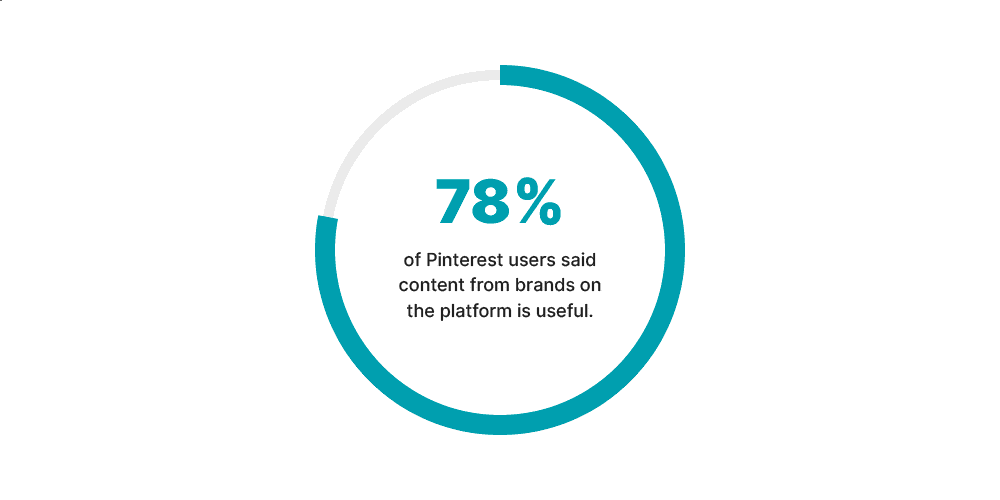
Another 90% of pinners said the platform helps them decide what to purchase, with 60% saying Pinterest helps them get ideas for what to buy.
In other words, Pinterest users often use the platform for product discovery and research and appreciate seeing content from businesses.
How many other social media platforms can say the same?
Although you could repurpose virtually all of your written content for Pinterest, you may want to start with content that’s been a hit with your audience so far.
75% of Pinterest users said they’re likely to watch videos about topics that interest them, whereas 55% said the same for other platforms. Starting with your most popular content may help you reach and appeal to the most Pinterest users when starting out.
To that end, it may be best to focus on blog content, product demos, tutorials, and other heavily educational content before repurposing other types of content.
As an example of a how-to video, consider this pin from ConversionMinded. Their pin teaches viewers how to create Pinterest images that visitors would click.
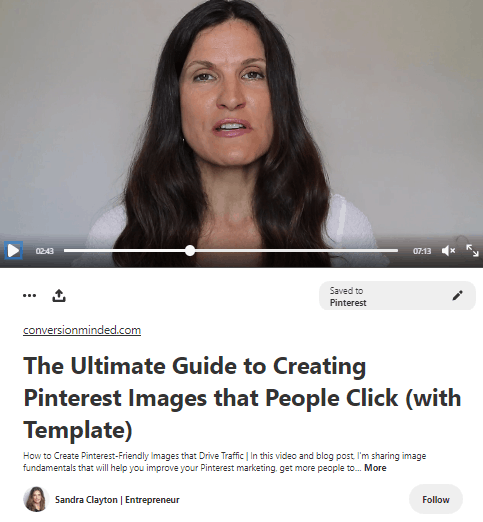
Home Depot shared this product-demo-style video pin showing how to install and use the Nest Cam.
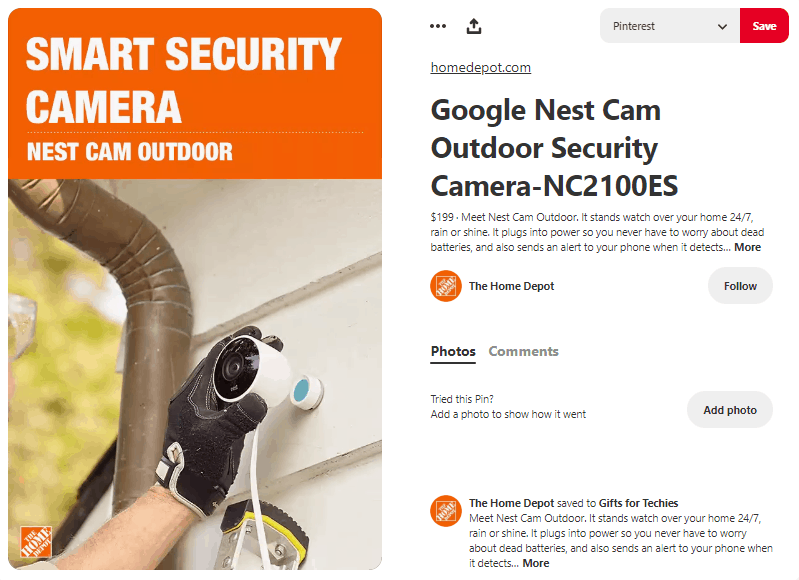
Here’s the gist:
Businesses across industries can share helpful video content on Pinterest.
Pinterest makes for a great content repurposing platform for businesses looking for significant potential ROI and a platform where users appreciate seeing brand content.
Our third video format is the go-to video hub for billions of people around the world: YouTube.
Format #3: Explainer YouTube videos and ads
One of the most straightforward ways to repurpose your content is by creating videos for YouTube.
88% of marketers plan on using YouTube in 2020. The platform’s over 2 billion users are just one of the many reasons why your business should, too.
YouTube’s users use the platform for more than just entertainment.
51% of American adults who use YouTube go to the platform to learn something they’ve never done before.
54% of people use YouTube to satisfy their curiosity about a topic. 54% use it for help solving a problem, too.
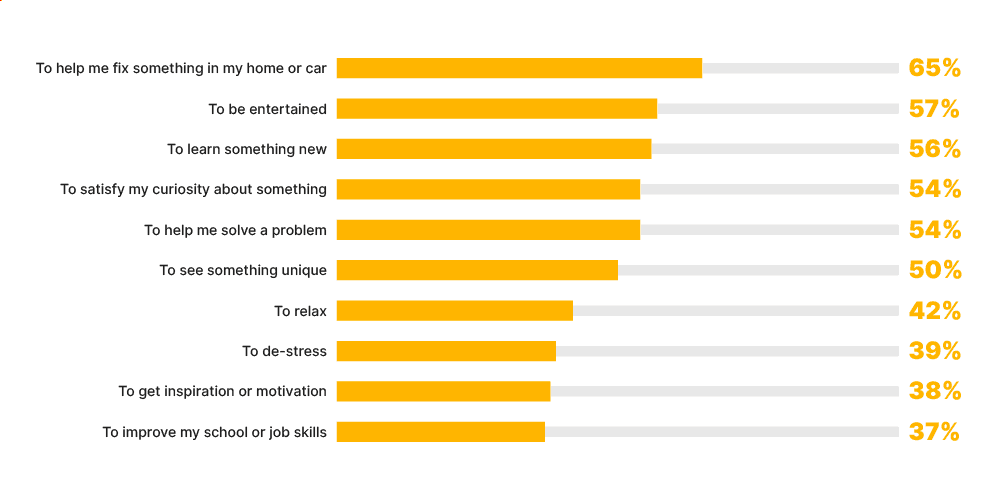
Globally, 90% of people have said they discover new brands or products on YouTube.
Even better, 40% of shoppers worldwide have said they’ve purchased items they discovered on the platform.
To appeal to those education- and shopping-minded customers, consider first repurposing product demos, explainer videos, and tutorials into videos for YouTube.
66% of consumers prefer watching a short video when learning about a new product or service. 96% of consumers have reported watching a short explainer video to learn more about a product or service, as well.
Besides product-related videos, release more general educational and explainer style videos. 36% of consumers want to see more educational/explainer video style content in 2020, so it would be a savvy video format to release.
Brands can do more than just repurpose their educational content into videos. Promotional materials could easily be turned into YouTube video ads.
65% of people have said they like social media ads that show them products they are interested in and may not otherwise have found.
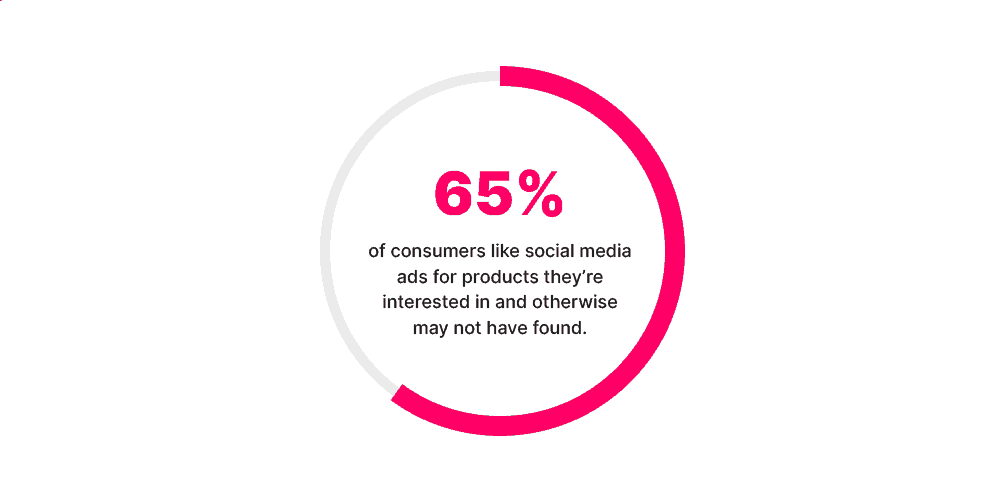
Given that 14% of people said they’re most likely to click on an ad from YouTube, it’s worth giving YouTube ads a spin.
To be one of the best video ads your viewers see that day, break from the norm, and use your ads to teach viewers something. Doing so many not only catch their attention but also leave a positive impression on viewers.
For example, consider this ad from Jack Black:
Their ad teaches men how to groom their beards. Though the tutorial does feature Jack Black products, Jack Black doesn’t explicitly spotlight the products until the end of the ad.
Likewise, this ad from Johnsonville taught viewers how to create a new dip recipe that used one of their sausage products:
So to wrap up:
Many of YouTube’s over 2 billion users use the platform for education and product research. Repurposing content to create YouTube videos and ads can help you reach these viewers and increase brand awareness, website traffic, and sales.
If you have heaps of educational content to share, don’t just share it on YouTube — turn it into our fourth video content type.
Format #4: Educational video series
If you have a blog post that’s performed well, you may consider turning it into a series of mini video lessons.
You can turn more than tutorial content into a video series, by the way. Listicles, discussions, and opinion pieces all make for great video lessons.
Let’s say you had a listicle article about the 11 best ways to expand your reach as a nonprofit. You could discuss each of those tips in their own video.
Likewise, you could discuss each of your main points from a discussion or opinion piece in individual videos.
As for where you should host your educational series, your website is a good home base.
Moz shares their Whiteboard Friday series on their website. Companies like SEMrush and HubSpot have even used video and other resources to create their own academies.
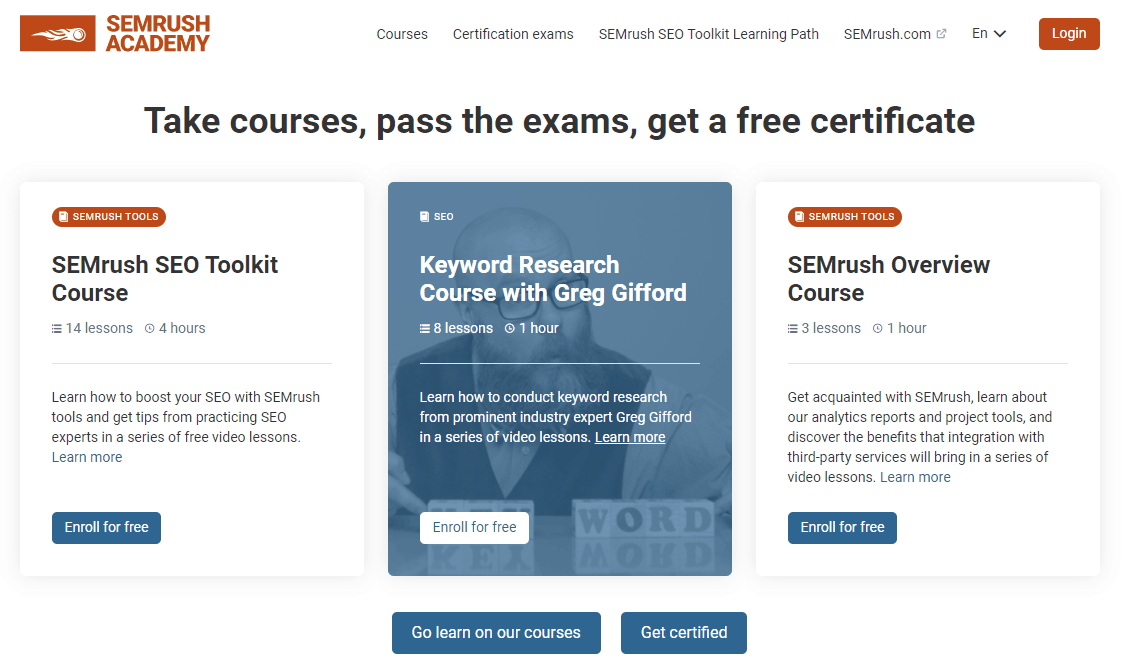
It’s also a good idea to share your videos on social media and in the platform-specific videos we discussed earlier, including Instagram, Pinterest, and YouTube.
If your educational videos are a hit, you could bundle them to use as a lead magnet, or join the leagues of other businesses who sell online courses and pick up a new revenue stream while you’re at it.
If you’re still worried that directly repurposing your educational content into video may not resonate with your audience, consider remixing that content into video instead.
Take Dave Ramsey as an example.
Though he uses The Dave Ramsey show to answer listeners’ questions, he often uses these as a point for reiterating many of the same pieces of advice he has discussed elsewhere.

Your brand could use customers’ questions or trending topics as a jumping-off point to recycle your previous content.
Here’s the skinny:
Of the many ways brands can win with video marketing, using video to educate customers is one of the most powerful.
Turn your most popular educational content into a series of videos to attract more leads and build trust in your brand.
Speaking of lead generation, let’s look at how you can repurpose landing and sales page copy into video.
Format #5: Landing and sales page videos
61% of marketers said generating leads and traffic was a top challenge.
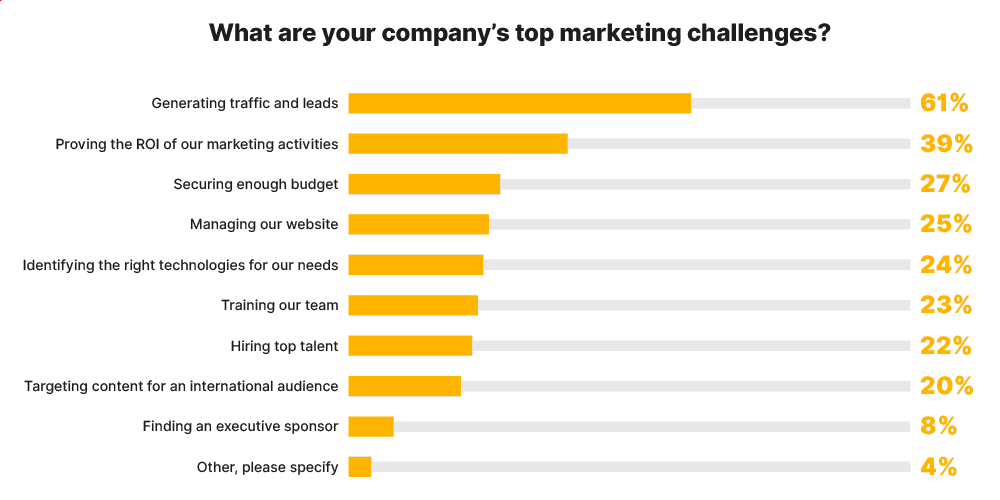
For that reason, marketers may want to add videos to their landing and sales pages to boost conversions.
For one, landing pages with fewer words tend to convert better (though there’s some contention on that). Furthermore, 59% of people believe visual information is more important than textual information when shopping online.
Using videos on your landing and sales pages allows you to say more with less.
Consider Mari Smith’s Facebook & Instagram Video Success Kit landing page as an example.

Though Mari’s landing page text is compelling and concise, her four-minute video was able to highlight and expand upon each of her page’s main points.
Putting her video at the top may keep more people on her page — and subsequently, hearing her marketing message — for longer than a text-only page would.
Videos don’t always have to expand upon your page’s main points, however. Speaking Brazilian’s sales page summarised the key points from their lengthy sales page.
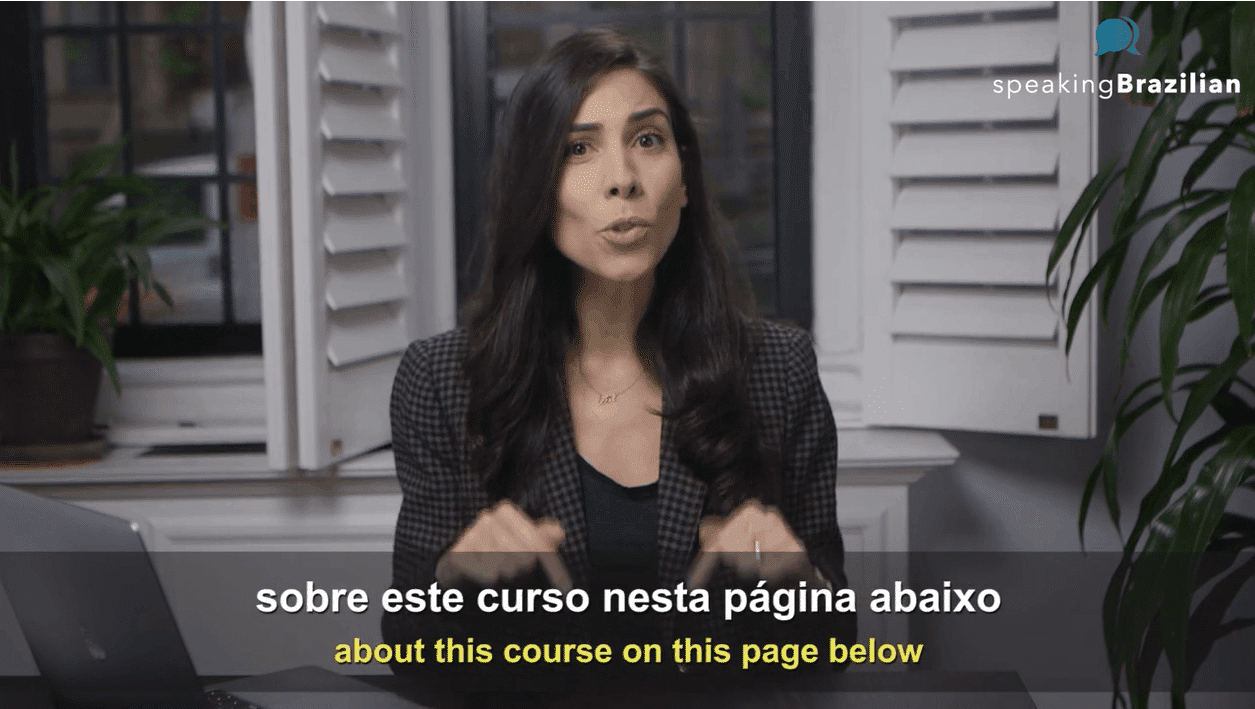
Beyond summarising and emphasising key points you would have included in your sales copy, you can also use videos for product demonstrations or to share customer testimonials.
Check out these guides to 10 questions to ask for video testimonials and how to create a testimonial video to design your own customer-converting testimonial video today.
So:
Use videos on your landing and sales pages to summarise your key points if your page is long, or expand upon your points if your page is short.
Now that we’ve covered ways to use repurposed video to attract and convert customers, let’s look at how to use it to delight current customers.
Format #6: Customer service and product videos
You can repurpose more than top- and bottom-of-the-funnel content through video.
You can also turn customer support and product content into video.
To start, include a video in each of your support database’s articles.
Let’s look at TurboTax’s example. TurboTax has a section of their website for help videos, such as this video about filing for an IRS extension:
They also feature several customer support- and product-related videos on their YouTube channel.
Though customer support videos may seem simply like a nice-to-have feature, consider this: 88% of global consumers expect brands to have an online self-service portal.
But customers don’t just expect to find answers on their own through self-service databases– many use them actively.
60% of American adults reported using the help or FAQ question of a brand’s website in the past 12 months — that was more than any of the other self-service channels measured.

Customers’ preference for self-service platforms can save brands’ budgets and resources, too. 43% of video marketers have said that video reduced the number of support calls they received.
Besides using videos to answer frequently asked questions, you could also use videos to show customers how to use certain features of your product. Brands can also use videos to demonstrate specific use cases for a product.
Let’s look at some examples.
Project.co used this demo video to demonstrate many of the tasks users could execute using their service:
Trello has shared several videos on YouTube about using different Trello features.

You could also share videos in onboarding emails to help new customers get up to speed.
For instance, Design Files included a video in this email in order to teach users to use Platforma with Figma:
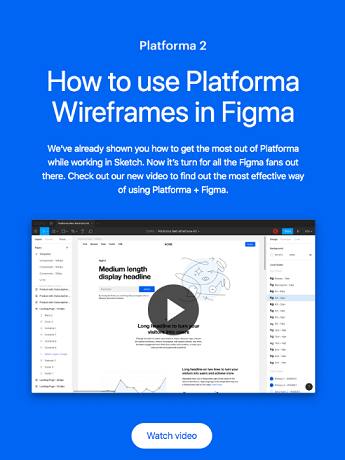
This email from Zapier taught subscribers about using app data with their service:

Here’s what you should take away:
Videos can help customers find the answers they need to succeed with your product.
Include them in your customer support database and in onboarding materials to make their experience as seamless as possible. More info on the latter can be found on our customer onboarding video production page.
Now let’s explore our final video format: interactive videos.
Format #7: Interactive videos for social media, your website, and more
Our final way to repurpose your content involves more than just transforming your content from a written to a visual form, but also from a passive to an active experience.
Interactive videos allow viewers to actively engage with the video. Interactive videos can help viewers fill out forms, make purchases, and more (this guide to interactive videos can give you the full scoop).
While interactive videos aren’t yet as widespread as their non-interactive counterparts, they’re a hit with customers.
45% of consumers said that videos with a CTA were helpful. 23% of people want shoppable videos, too.
Interactive videos allow you to repurpose content that’s traditionally hard to put into another format — think forms and product pages — and turn them into an interactive format.
This Ted Baker video, for instance, allows viewers to interact with and shop for several of the items featured in their video.
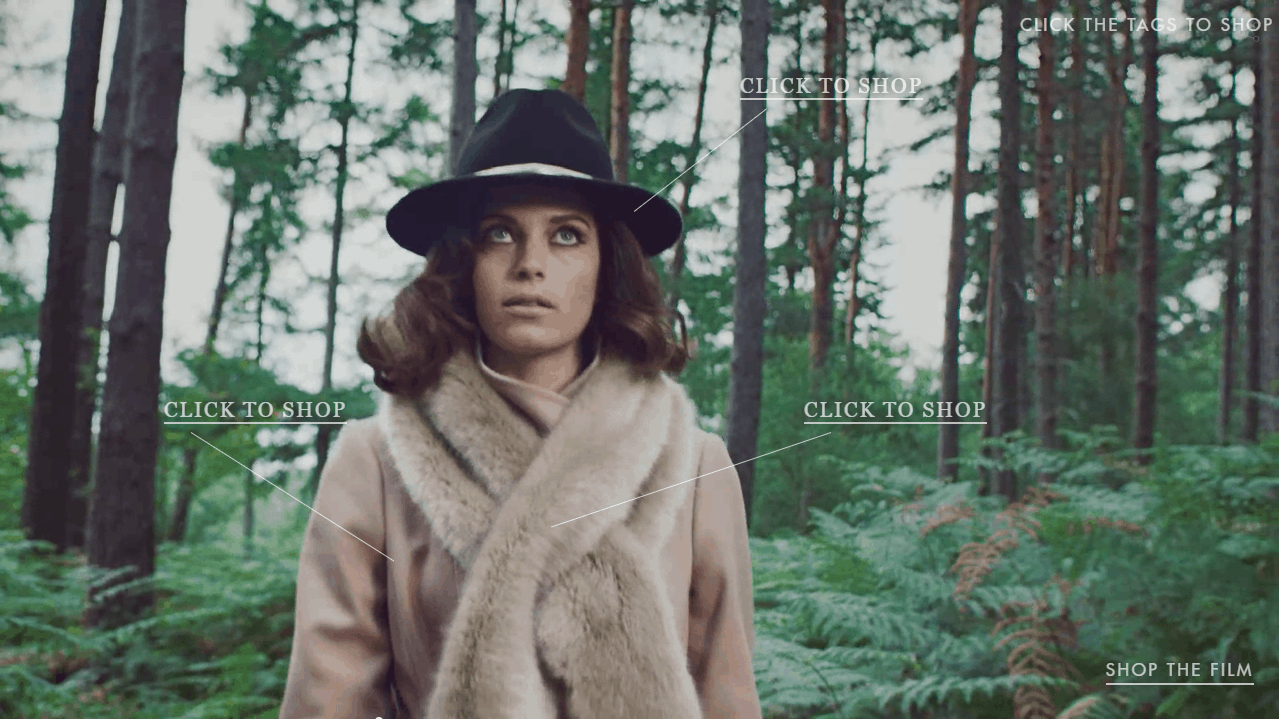
These Virtual Art Sessions videos from Google let viewers demo their Tilt Brush tool.
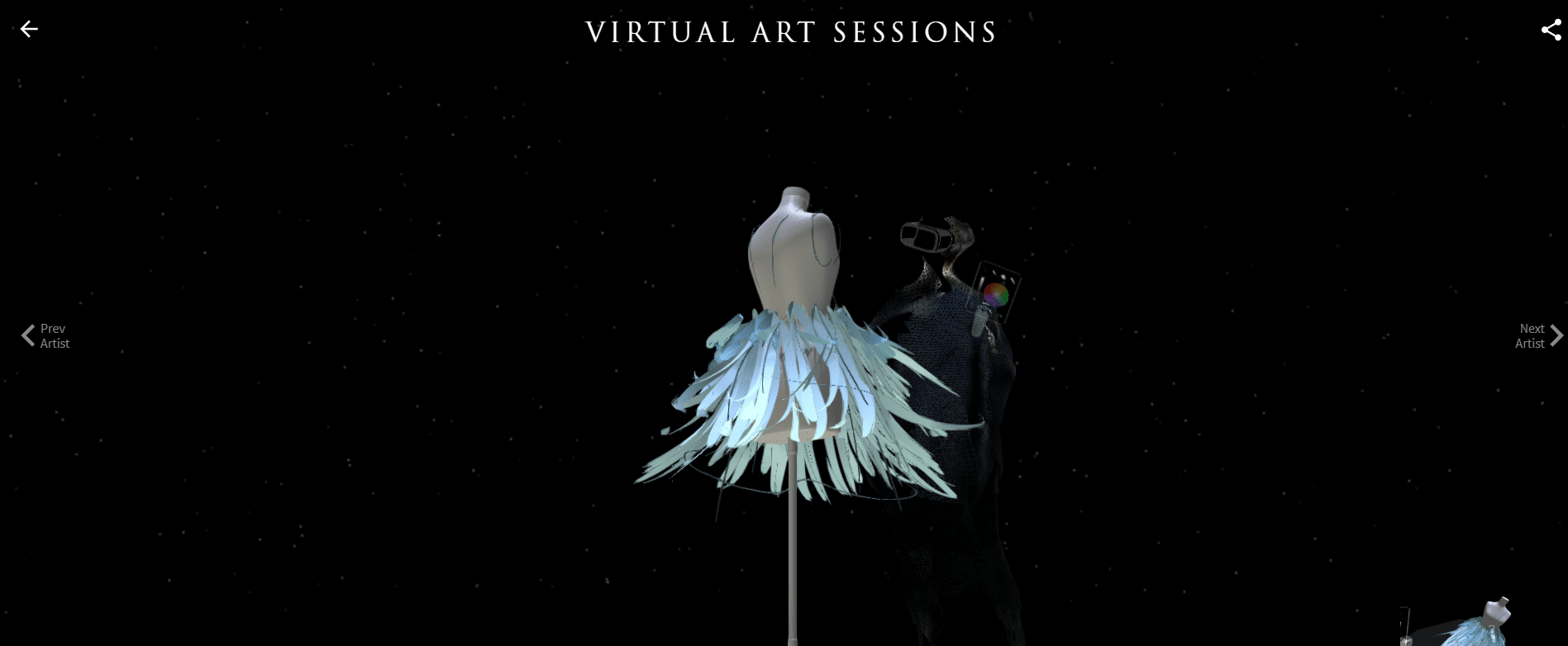
FinFit’s interactive video includes clickable elements where users can learn more information.
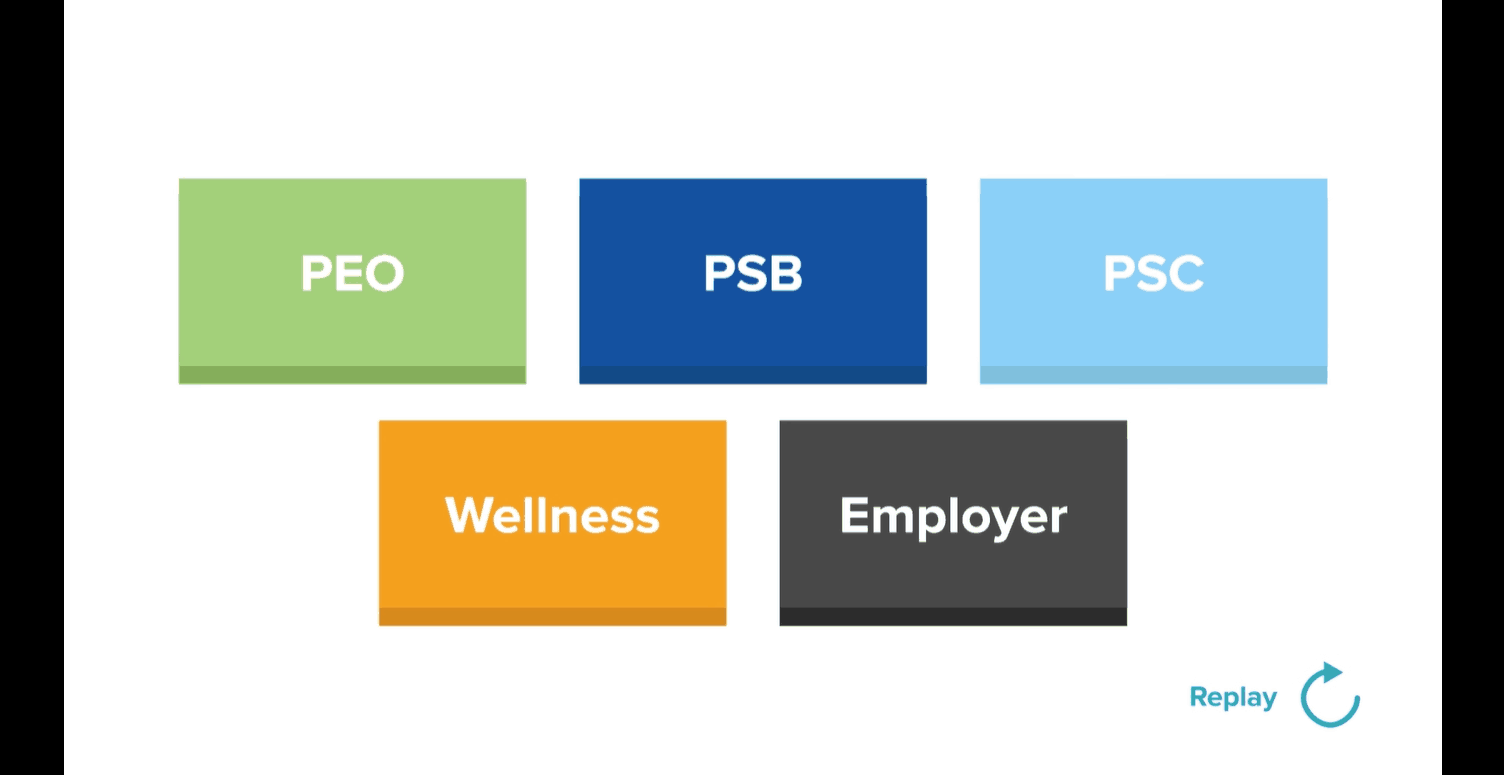
To get started with your own interactive, check out these best interactive videos for inspiration and guide to how interactive videos work for tips.
Here’s what you should know:
Interactive videos provide an excellent way to repurpose content such as forms and product pages into an engaging experience. They may not be widespread, but using more of them in your brand’s content can help you attract and delight more customers.
Takeaways
Marketing teams don’t need to constantly come up with new content ideas to wow their audiences — content repurposing will do just fine.
Content repurposing is simply when marketers take the key points from one piece of content and turn it into a different format.
Given how popular videos are with consumers and the ROI many businesses have seen by using more video content, brands should consider repurposing their content into video first.
Seven content formats that brands should consider include:
- Instagram video: Stories, video posts, IGTV, and Instagram Live
- Pinterest video posts
- Educational YouTube videos and ads
- Educational video series
- Sales and landing page videos
- Customer support and product videos
- Interactive videos for content such as forms and product pages
For more insights on how to repurpose your written content into video, check out our blog for hundreds of tips and best practices.
Ready to up your video marketing game? Then contact us to start creating your first video today.






